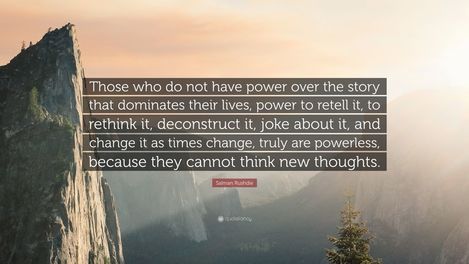Menu
It's time to chase Innovation instead of reacting to the status quo.
-Taylor Williams
  Recently, I was listening to the podcast version of my favorite radio show "The Drive with Big Al and Dmac" from 104.3 The Fan in the Denver area. Since we live in Texas now, I enjoy the show via podcast. Anyway, the show was talking through the process of NFL players becoming memorable in the game of football. The point they were making was that it is the players who have both the skills AND the ability to bring the fans into the passion of the game. Thinking about this idea and relating it to my own experiences, the power of the story is very true. A dunk or a touchdown is great, especially if it is your team, but when that dunk creates an earthquake on the rim, or that football player runs up and down the field getting his team pumped up, we as the audience have bought sucked into the passion and story of the game like a black hole. We become part of the story, changing the simple game into an event. Think about speakers at TED Talks. My favorite example that I watched (off of a suggestion from Carmine Gallo's book Talk Like TED) is Bill Gates and his talk on Malaria. As Gates is introducing his work and the importance of funding research into malaria, he releases mosquitos into the crowd and says, "There's no reason why poor people should be the only ones to experience this". Shock, Awe, Excitement, and well bug spray!? The power of the story can change the course of the experience you are in. The audience can be brought into a greater understanding of the events taking place. Stories provide the audience an opportunity to make more investment in the ideas and accomplishments of the characters. What if parent-teacher conferences were less awkward because your parents had been experiencing the story of your class all year long. Imagine the conversations that could happen around the dinner table when a father asks specific questions about what the son and daughter were studying in math and science. A report card should not be the only window into your classroom. If I was to take my daughters preschool reports (once a semester) as a view into her classroom, I would be a distant, absent parent. You should share the incredible things that you are doing in your classroom and promote it! Why? Because you are a teacher and you do amazing, life-changing things every day.  Derek Silvers shares a video called Obvious to you, Amazing to Others on Youtube (See Above). This should be the rally cry of teachers, encouraging their students to share their passions and skills! This video should also be a challenge to those teachers, who are choosing to accept fear over the excitement and engagement of their classroom story. Think about this: Fear Runs Our Classrooms... If you ask a student what their biggest fear is at school, my guess is 9 times out of 10 they will say "failing". Students are afraid to fail. Teachers are afraid of their students failing. Teachers are afraid of the admin and the review and the ideas that come from their students failing Teachers and Students are afraid of high stakes, standardized tests. I remember as a boy, my family went camping on Lake Powell in Utah. My grandfather was there with his boat and he would take us out fishing and the older cousins got to go water skiing. At one point during our time on the lake, we stopped at a huge rock outcropping in the middle of the lake. Being the youngest cousin and not knowing what was going on, I asked my papa what we were stopping for. He pointed at the other cousins and said: "watch em, you'll know what to do". I watched as my cousins pawed up on the rocks like monkeys across a tree trunk and climbed up to a point where they could stand. Then, slowly, they got their feet set, and leaped into the water making the greatest cannonball splashes! I wanted to do this, but I wasn't sure if I could, they were really high up on the side of the rock and I was nervous about heights. My dad showed me a shorter spot on the rock where I could climb up and jump into the water. I inched my way up the rock, set my feet and almost jumped. I hesitated and froze. Scared to move. I wanted to be like my cousins, jumping and having fun, but there was a fear inside me that said no. I stood on the shorter ledge for about 10 minutes. Finally, my dad jumped into the water and waited for me, providing that safety net that gave me enough confidence to leap in. With the rush of water over my head, I was hooked. The next time up the rock I went to a higher ledge. Climb. Set. Run. Jump. Splash. By the third time around I was climbing to the same height as my older cousins, enjoying the feeling of flying through the air and splashing into the water. The crazy part is I almost didn't get to experience this because I was afraid. When you think about jumping into social media, the smaller steps can be the safety net you can take to get more and more comfortable with the situation the more confident over time you will be to utilizing your sharing ability. So check out these 5 steps to sharing your classroom story... take small steps and jump into it for the long haul! 1. Start with a small world--the parents It is easy to take the idea of social media and create a closed environment to share your classroom story. Google Drive: Create a shared folder that you give view access to to the parents in your classroom. Each week upload photos and videos from the week so that parents and students can see the week in review of all the photos you have shared. This is really great too if you recruit students to share the pictures they might take with you so that you can load them into the folder as well. Facebook: Create a closed group on facebook that you directly invite parents to follow. Here you are safe to post and share what is happening in your classroom without worry of sharing publicly online. Google Site: Create a Google site that is dedicated to the events of the class. Add images and descriptions of what is happening in the classroom. Build a simple blog on EduBlogs or Blogger and give brief updates and pictures of the day's events. 2. Choose the app that works for you Besides the apps mentioned in 1, think about: Instagram- Create a class instagram account that is specifically for classroom activities. Pair the account with a class hashtag that parents and students can follow and set your account to only be viewed by those who are following you. Also, for accountability and safety reasons, don't follow anyone with this account, simply use it as a platform to share your story through pictures. Twitter- The number one place for educators to share their classroom stories with the world. But diving in can be intimidating. Follow your favorite authors, bloggers and friends. (Check out @taylorhwilliams). Search specific concepts or hashtags like #edtech, #math, #teacher. Start there and see what others are posting, and start to replicate and practice the actions of a tweet! Youtube- Maybe images and text aren't where your passion lies. Maybe you create weekly video recaps with your students to provide a clear story of your classroom. What about adding green screens, student reporters, other ideas? Video provides endless opportunities to share what is happening! 3. Make a goal to post once a day Check out Jordan Watson and his approach to creating and interacting on social media. Pay special attention to his attitude on timing and consistency! How To Dad https://youtu.be/1illzOnz6w4 4. Be inspired by other educators doing the same thing!
Be a consumer! No matter the platform, take the opportunity to learn and encourage other educators on their teaching adventures. Find an idea that makes you think "Gah, I wish I could do that!". Reach out! Connect with the teacher and have the conversation of what it took to make that awesome lesson happen! Ask questions and enjoy the journey of building your PLN (Professional Learning Network) 5. Connect your accounts! Use apps like IFFT and other extra tools to make your social media spread with the click of a button. Ultimately, it is your passion and desire that will inspire the students. What we need to remember is that they don't learn like you learned when you were in high school. They aren't focused on the same dramas and stresses that you were when you were in middle school. There is more access to information and technology at younger ages. We need to share our story and show students that we can be responsibly, engaging storytellers to the world!
0 Comments
Leave a Reply. |
About TaylorTaylor currently serves as a Coordinator of Innovative Learning for a mid-sized school district in Texas. He is a speaker, writer, and coach for all who are in conflict with the status quo. Archives
March 2023
|

